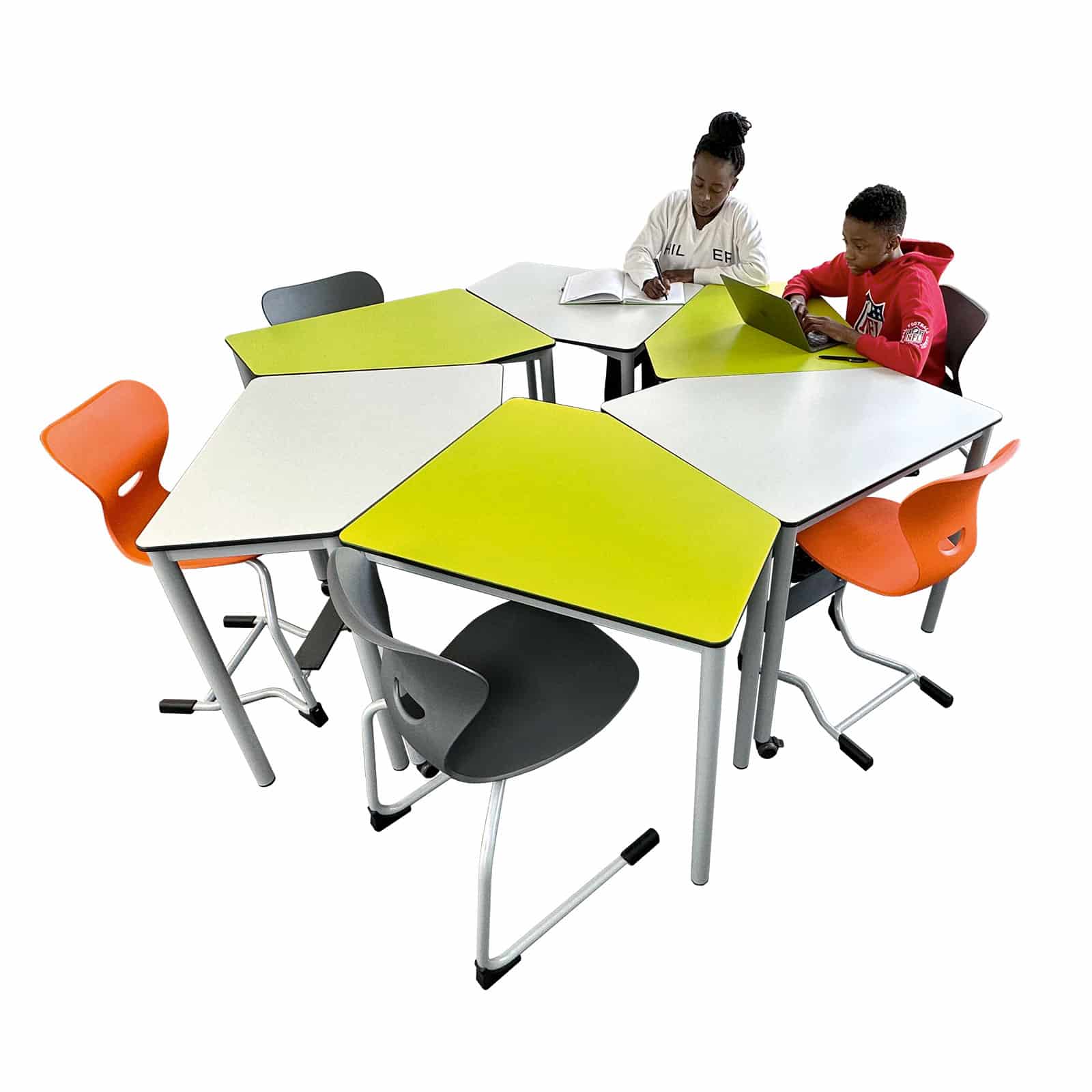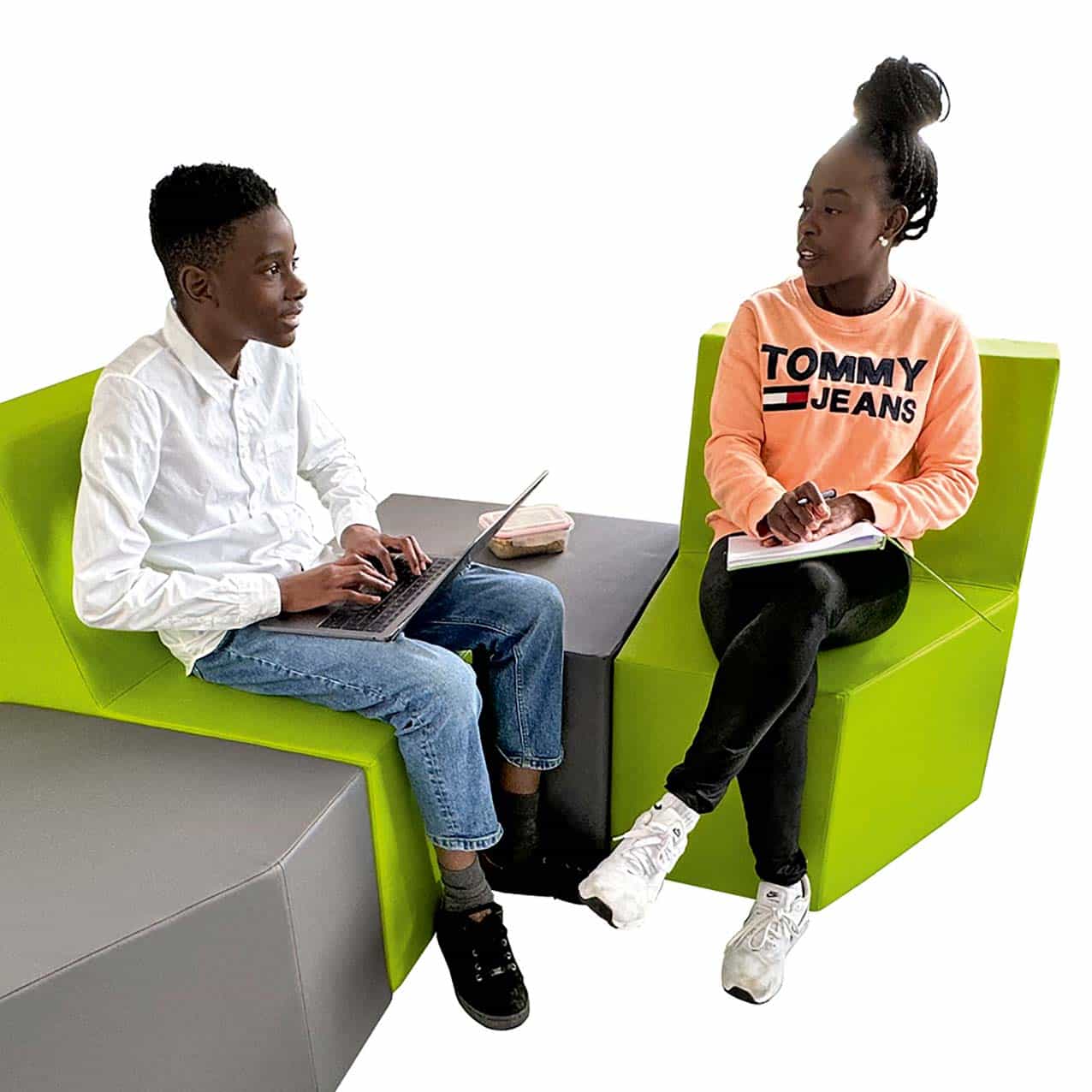
Cooperative and self-organised teaching promote active learning, cooperation and a sense of responsibility among students.
The advantages of cooperative teaching:
In cooperative teaching, learners work together in groups to complete projects and tasks. In this method of learning, teachers tend to be facilitators who support the group when needed. This fosters students‘ development in a variety of ways:
- Fostering social skills: students learn to share their ideas and opinions, listen to others, respect others and work out solutions together.
- Increasing motivation: when learners feel that their contributions are valued and that they can make an important contribution, they are more likely to become more engaged and involved in the group.
- More effective learning: by working in groups, students have the opportunity to explain and discuss what they have learned with each other. This allows them to deepen their understanding and consolidate their knowledge.
- Fostering individual skills: in the cooperative learning environment, learners have the opportunity to use their individual strengths and skills and to support others in the group. By working together, however, they can also recognise their weaknesses and work on them in a targeted way.

The advantages of self-organised teaching:
In self-organised lessons, the focus is on the students‘ own responsibility. They plan and organise their learning process independently, set goals and search for learning materials and strategies on their own. Teachers support the students in goal setting and self-reflection, but step into the background to give the learners freedom for their individual learning paths. Particularly advantageous about self-organised teaching are the opportunities for:
-
Individual adaptation: students learn to take into account their own needs and interests and to set their own pace of learning. They can set their
own learning goals and learning methods, which can help them to identify more strongly with the learning process and be more motivated.
- Promoting autonomy and personal responsibility: Students become more confident and independent as they take more responsibility for their own
learning process. They learn to set their own learning time and learning goals, to motivate themselves, which can also contribute to more independence
outside school.
- Improved use of technology: learners can access a wider range of learning materials and better adapt their learning to their individual needs.

The optimal combination of cooperative and self-organised teaching.
Both self-organised and cooperative teaching methods offer a lot of advantages. However, neither method alone can address all the individual needs and learning styles of students. A combination of both teaching methods is necessary.
A major advantage of combining both teaching methods is that students work together on projects/tasks while pursuing their individual learning paths
and goals. This hybrid approach encourages collaboration and communication as well as student independence and personal responsibility. By combining
both approaches, teachers can create a wide range of learning environments that meet students‘ needs and abilities.
Prerequisites for the learning space
In order for cooperative and self-organised teaching to be successfully implemented, the learning space must meet certain requirements in terms of
furniture:
-
Flexibility: The room should be designed flexibly to allow for both group work and individual learning. Tables and chairs should be easy to move
around to allow for different working constellations.
- Group workplaces: There should be enough tables and chairs for various group constellations where students can work together and exchange
ideas.
- Individual workplaces: Students should always be able to work quietly and in a concentrated manner.
- Storage space: Sufficient storage space for materials and personal belongings is important to ensure order in the classroom. This allows students to
organise their work materials independently.
- Different seating options: Different seating furniture such as chairs, stools, seat
cushions or stacking benches allow students to create their preferred
learning environment.
- Technology integration: the classroom should have the necessary technological equipment to use digital learning resources and tools.

